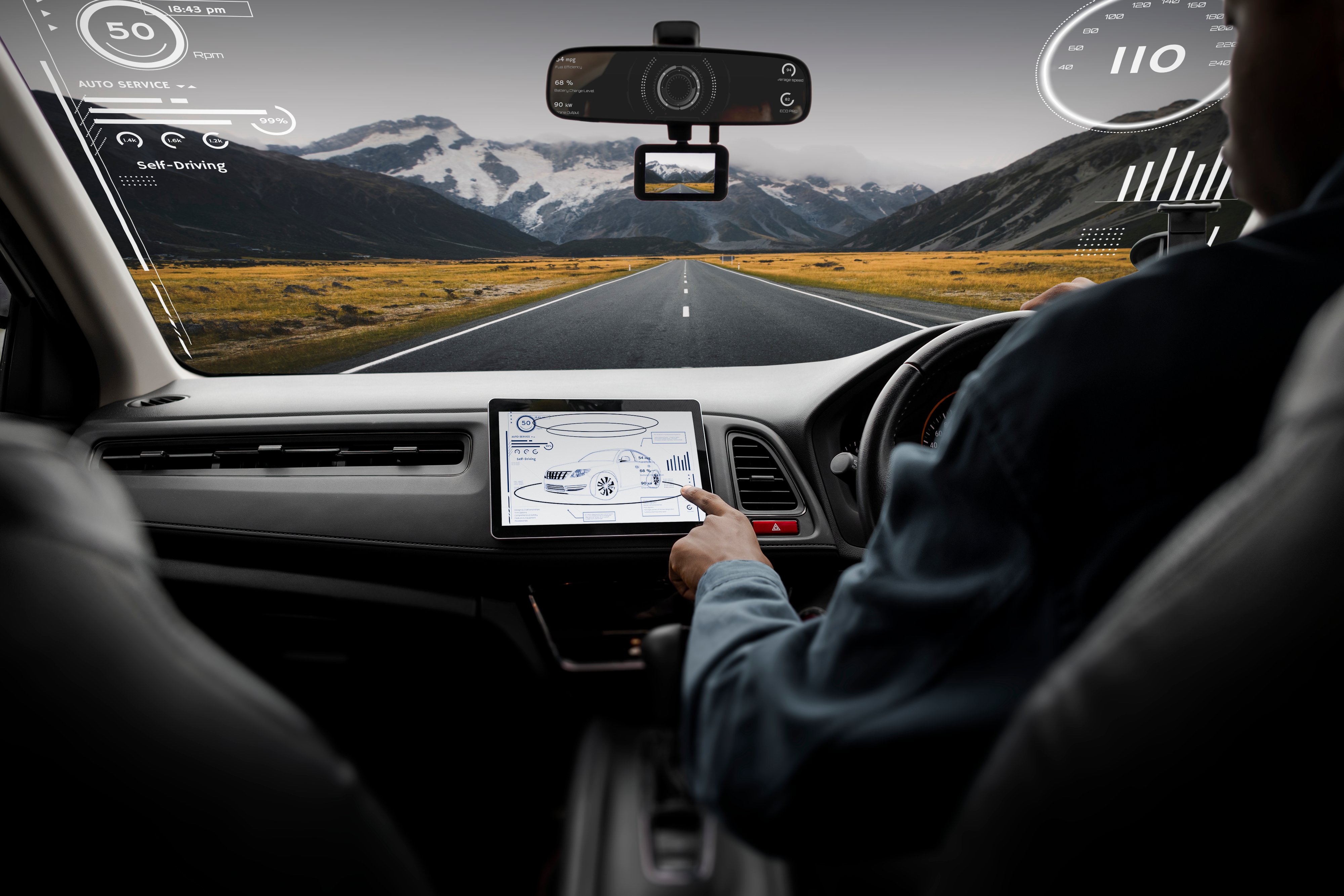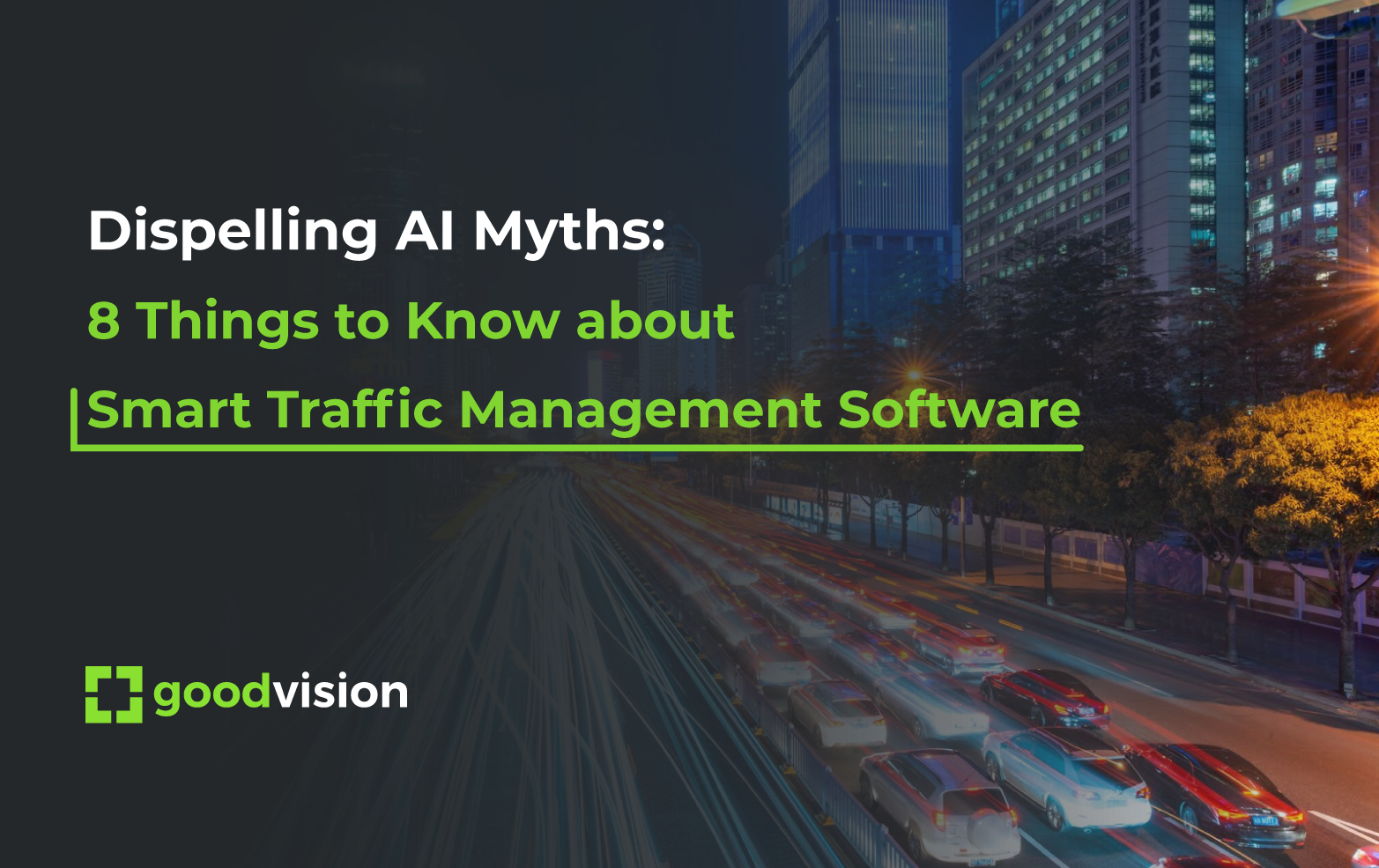Dispelling AI Myths: 8 Things You Need to Know to Get Started with Smart Traffic Management Software
In May 2023, amid heated discussions surrounding the rapid advancement of AI models like ChatGPT, Dr Geoffrey Hinton, a Turing Award winner also known as the “godfather of AI”, announced his resignation from Google. His reason was to flag the dangers of the technology he helped create.
Then there’s Jürgen Schmidhuber, another famed AI scholar, often called the “father of modern AI”. However, his take on the flourishing of AI is radically different: Schmidhuber claims that although we can’t stop it, there’s nothing to be afraid of. On the contrary, he believes that advanced AI will only enhance our living standards.
The AI family feud perfectly demonstrates how polarising this technology can be. If even the leading experts in the field are divided over the impact of AI, misunderstanding among common users seems inevitable. And that is a fertile ground for myths and misconceptions which stand in the way of progress.
To clear up some confusion, we’ll look at some of the most pervasive AI myths, specifically from mobility and traffic engineering. Is AI a friend or foe for traffic managers? Does smart traffic management require massive investment to bring results? Does mobility really need AI?
#1 Artificial Intelligence and Machine Learning Are The Same
Before we get to more mobility-specific myths, let’s clarify that AI and machine learning (ML) are not the same thing.
AI is a broader term and refers to all technologies which aim to enable machines to mimic human intelligence and solve problems. This includes ML, a technology that allows these machines to self-learn and make predictions based on historical data. So, while the two concepts are closely connected, they can’t be used interchangeably.

#2 Mobility AI = Autonomous Cars
For many, the first thing that springs to mind when they hear “AI in mobility” are self-driving vehicles. Though autonomous cars are an important use case for AI in transportation, they’re far from the only one. Here are some other notable ways AI can be applied in smart city management, traffic engineering, and mobility-related industries:
- Smart traffic data collection — Gathering and compiling traffic data is laborious. AI can expedite it by automatically extracting relevant traffic metrics from video footage and other sources for fast and precise traffic detection.
- Traffic data analytics — Once traffic data is ready, an intelligent traffic management system can examine it to find patterns, generate reports, create digital twins of traffic flows, and more.
- Smart city traffic management — With this knowledge, traffic managers and municipalities can take measures to mitigate congestion and road closures, optimise commuting traffic, or inform infrastructure investments. AI can also handle some traffic management tasks, such as light signal adjustment or rerouting.
- Route planning — Shipping companies and public transportation operators can use AI to eliminate unnecessary stops, reduce fuel consumption, and avoid congested areas or dangerous road spots.
- Telematics — AI thrives on data, and by coupling it with telematic devices, you ensure a steady supply of input. Insurers and fleet managers can then use information like driving patterns, vehicle usage, or location.
#3 AI Will Replace Traffic Engineers and Modelers
The “AI will make us redundant” myth is present in all industries, and there’s some truth in it. According to a Goldman Sachs report, AI can replace 300 million jobs across various sectors. However, traffic modellers can rest assured that their jobs are safe.
That’s because, in traffic engineering, AI will be used mostly to automate manual tasks like traffic data collection and processing or vehicle classification. Traditionally, these processes involved going through hours of footage or, worse still, conducting manual traffic surveys. Instead, a smart traffic management system can extract data from large volumes of video recordings in hours rather than days with near-perfect accuracy.
However, human specialists will still handle complex work requiring expertise and decision-making skills. Traffic management software will serve as a tool that complements their abilities while handling mundane jobs for increased productivity. And, with urban development gaining pace worldwide, municipalities and traffic planners will need every bit of help.

#4 Smart Traffic Management Software Is Expensive
Many believe that since AI is so disruptive and offers seemingly endless possibilities, it has to cost an arm and a leg. The point is, we tend to focus on the price of AI-powered software, overlooking the savings it generates.
Although massive AI deployments (e.g., for smart city management) often require a significant initial outlay, the scale also works in favour of these initiatives, leading to faster ROI. For instance, a study by ABI Research found that cities are expected to save US$280 billion by 2030 by using digital twins for optimised urban planning.
Subscription-based traffic management software is a viable alternative for companies that want to gain access to smart traffic analytics and AI-enabled data collection for a monthly fee rather than an upfront long-term investment. Unlike traditional methods, its price is set and doesn’t increase with traffic density or scene complexity. As an out-of-the-box solution that traffic surveyors can use on their own, it removes the need (and spending) for third-party suppliers, data storage, and other complementary services. Traffic management software is also more efficient than manual records collection, with data extraction taking about 1 hour regardless of survey size.
#5 You Need a Data Scientist to Benefit from AI
Like ML, data science is another term that regularly appears with AI. However, while data scientists are crucial for developing and fine-tuning AI models, hiring one isn’t necessary for every company that wants to use AI-based traffic management software.
In AI projects, data scientists are mainly tasked with preparing the data to be fed to the model. They also analyse the output produced by the engine in search of actionable information. Both can be done in traffic management without recruiting a dedicated data specialist.
That’s because there’s no need to build your AI tools for traffic management. The existing traffic data collection solutions already use AI to easily extract structured records from traffic surveys and recognise types of vehicles. Then, pre-processed traffic records are further analysed, either by ready-made AI features of traffic management software, your traffic modellers, or, preferably, both working together.

#6 AI Doesn’t Make Mistakes
At this point, you may think that AI is a golden remedy for all challenges, traffic-related or not. However, in the relatively short history of AI, companies squandered billions of dollars on failed, overambitious AI projects.
These weren’t just any companies but big-name corporations that led their respective industries. For a recent example, you may have heard about Bard, Google’s conversational search chatbot, making up facts about the James Webb Space Telescope… during its very first demo presentation.
In other cases, an AI error can have more severe consequences. In 2021, it forced Zillow, an online real estate marketplace, to lay off 200 employees, cutting its workforce by 25%. The reason? Zillow used an ML algorithm to assess the prices of properties the company could purchase, renovate, and resell at a higher price. Due to higher-than-average error rates for off-market homes, Zillow bought thousands of properties at inflated prices. Combined with COVID-induced shortages in the renovation workforce, the mistake prevented the company from successfully flipping purchased houses, resulting in lost millions of dollars.
These failures serve as a reality check, but on the flip side, let’s not forget that AI is still a developing technology that is progressing rapidly. Occasional glitches are a natural part of progress and shouldn’t overshadow the potential of AI. Instead, they should be a hint for businesses to approach AI’s capabilities more realistically. Additionally, these failures make a strong case for the claim that AI works best with human employees who oversee its operations.
#7 Large Volumes of Data Are Everything
Like the human brain, AI models need information they can analyse, study, and draw conclusions from. And although AI is much better at crunching large volumes of data than us, more doesn’t always mean better.
The quality of traffic data rather than its volume matters the most when you want to get reliable and informative traffic insights from a smart traffic management system. For that, the engine uses a variety of parameters extracted from video recordings, drone footage, traffic surveys, sensors, or onboard telematic devices, such as:
- traffic volume,
- vehicle trajectory,
- vehicle type,
- traffic scene,
- vehicle speed,
- road events and violations.
Engine efficiency is just as important as data quality. Only well-built traffic management software can turn all those parameters into detailed reports covering vehicle gap acceptance, road saturation, traffic violations, near misses, parking lot occupancies, and more. The holistic perspective allows modellers to account for all essential traffic metrics.
#8 My Company Doesn’t Need AI For Now
We’ve proven that benefitting from mobility AI doesn’t require massive spending, hiring specialised staff, or laying off traffic modellers. But, despite that, you may still be reluctant to implement AI for one simple reason: why would you risk it if your business is doing well?
Here, it’s important to understand that AI isn’t a technology of the future; it’s a technology of the present. For example, 65% of decision-makers in the logistics industry say that AI will play an important role in their company in the coming few years. AI-powered infrastructure is also the largest segment of the global smart city market and is projected to grow to over $103 billion by 2025.
The transition to AI-enabled traffic management is already happening. Organisations that don’t adapt risk falling behind their more innovative competitors, already starting to use a smart traffic management system to their advantage.

Conclusion
AI is redefining every industry, and traffic management is no different. So whether you’re an AI enthusiast or sceptic, we hope our list has helped debunk the most notorious myths around AI in mobility.
Now it’s your turn to get started with smart traffic management software. Look at the success stories of cities and organisations that worked with GoodVision to plan, automate, and optimise their traffic data collection and modelling. If you want to be one of them, let’s get in touch.


